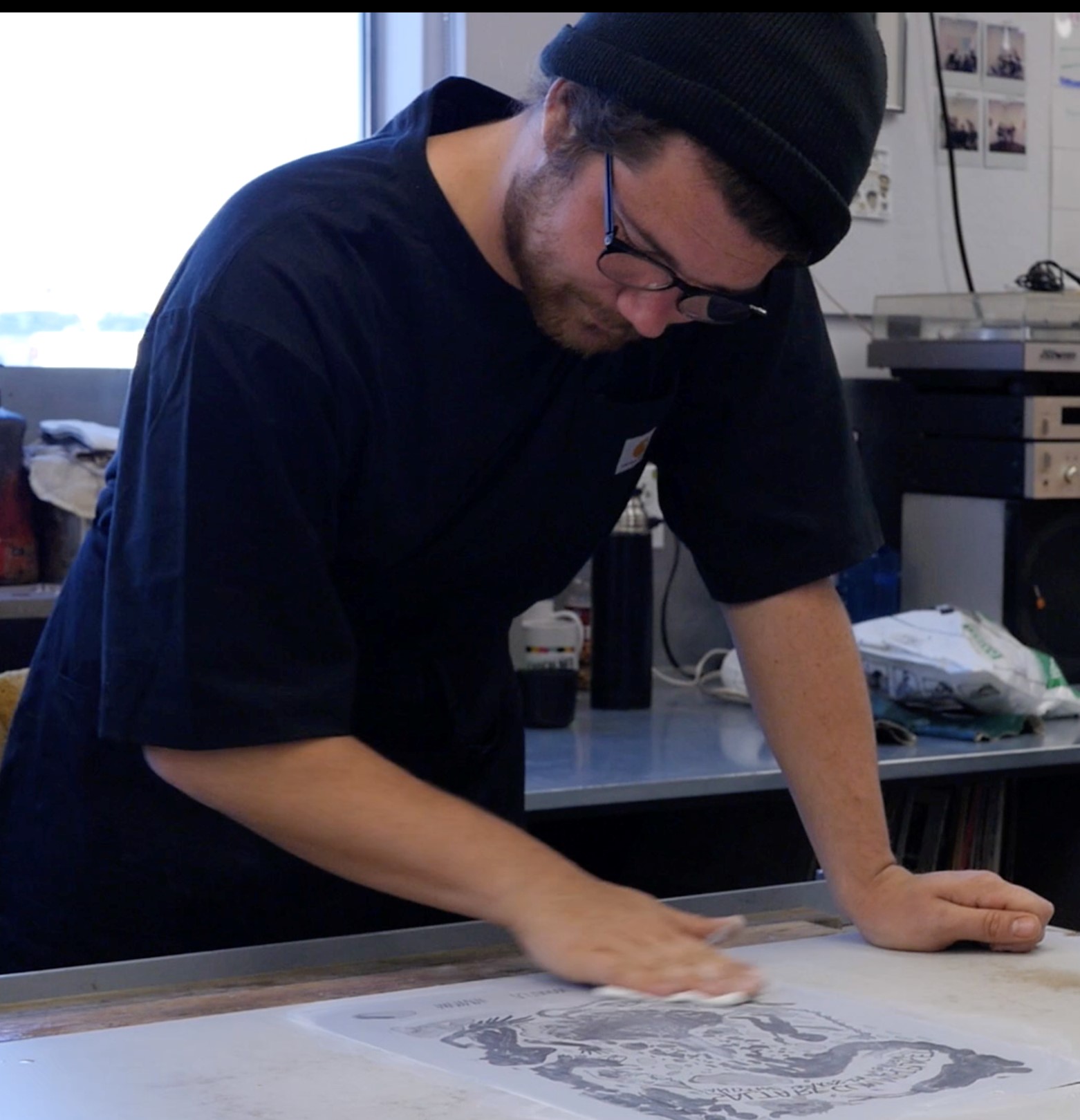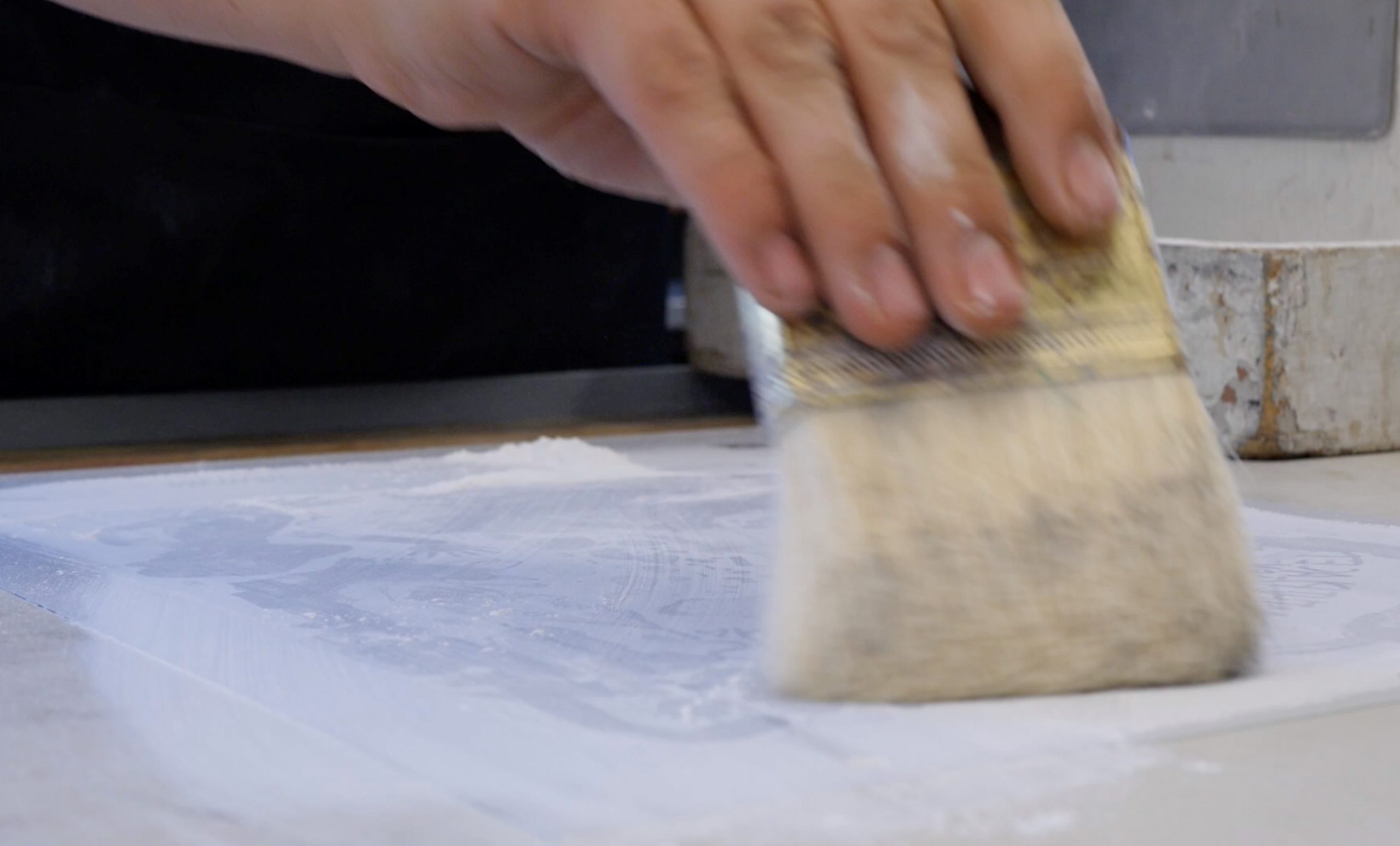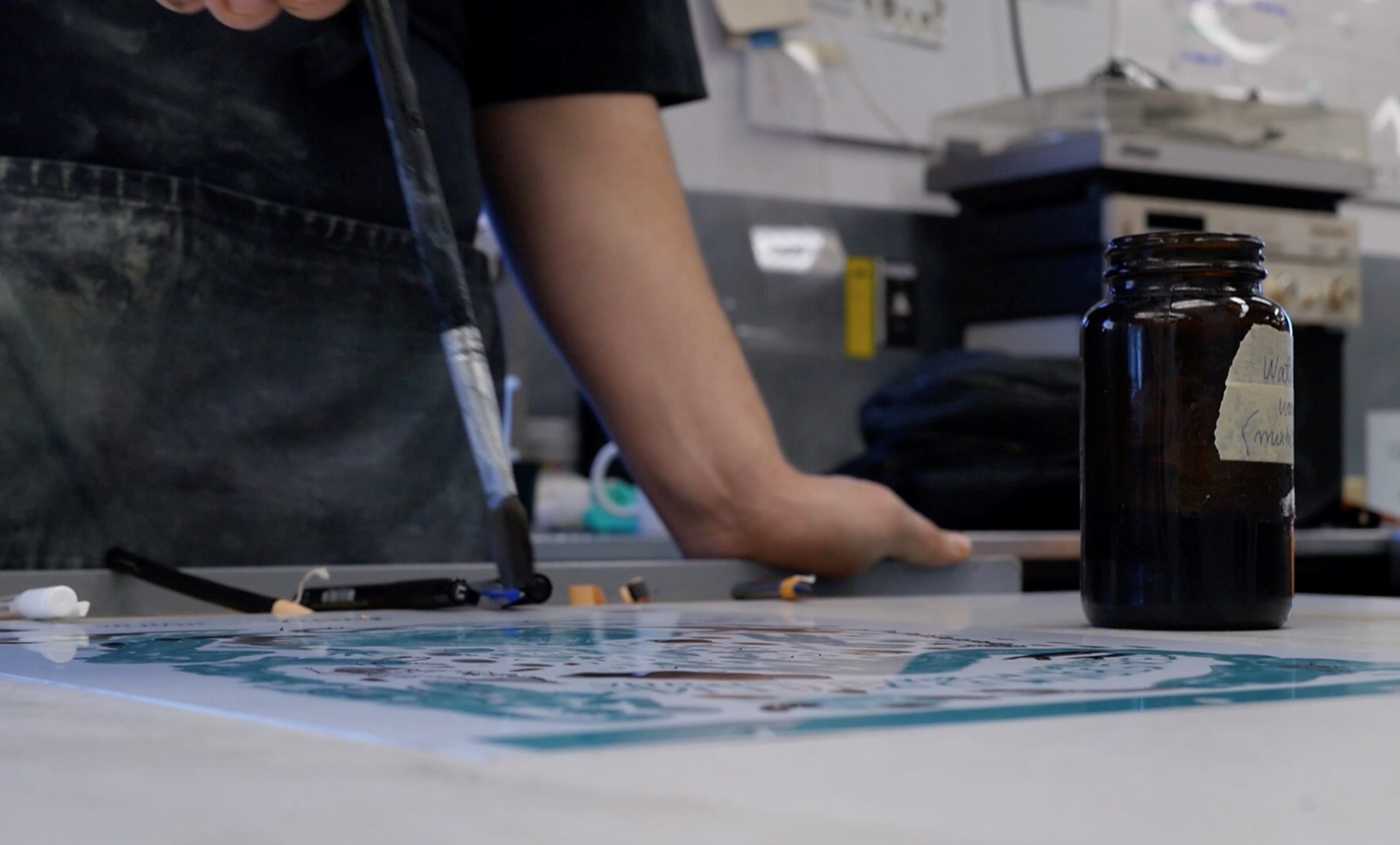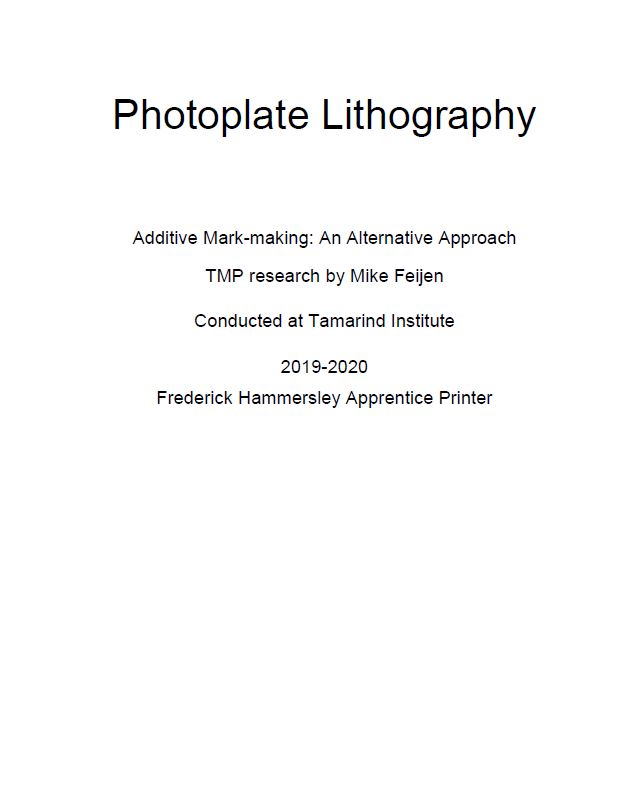Research by Mike Feijen
Frederick Hammersley Apprentice Printer, 2019-2020
–Full Research Paper at the End of this Post–
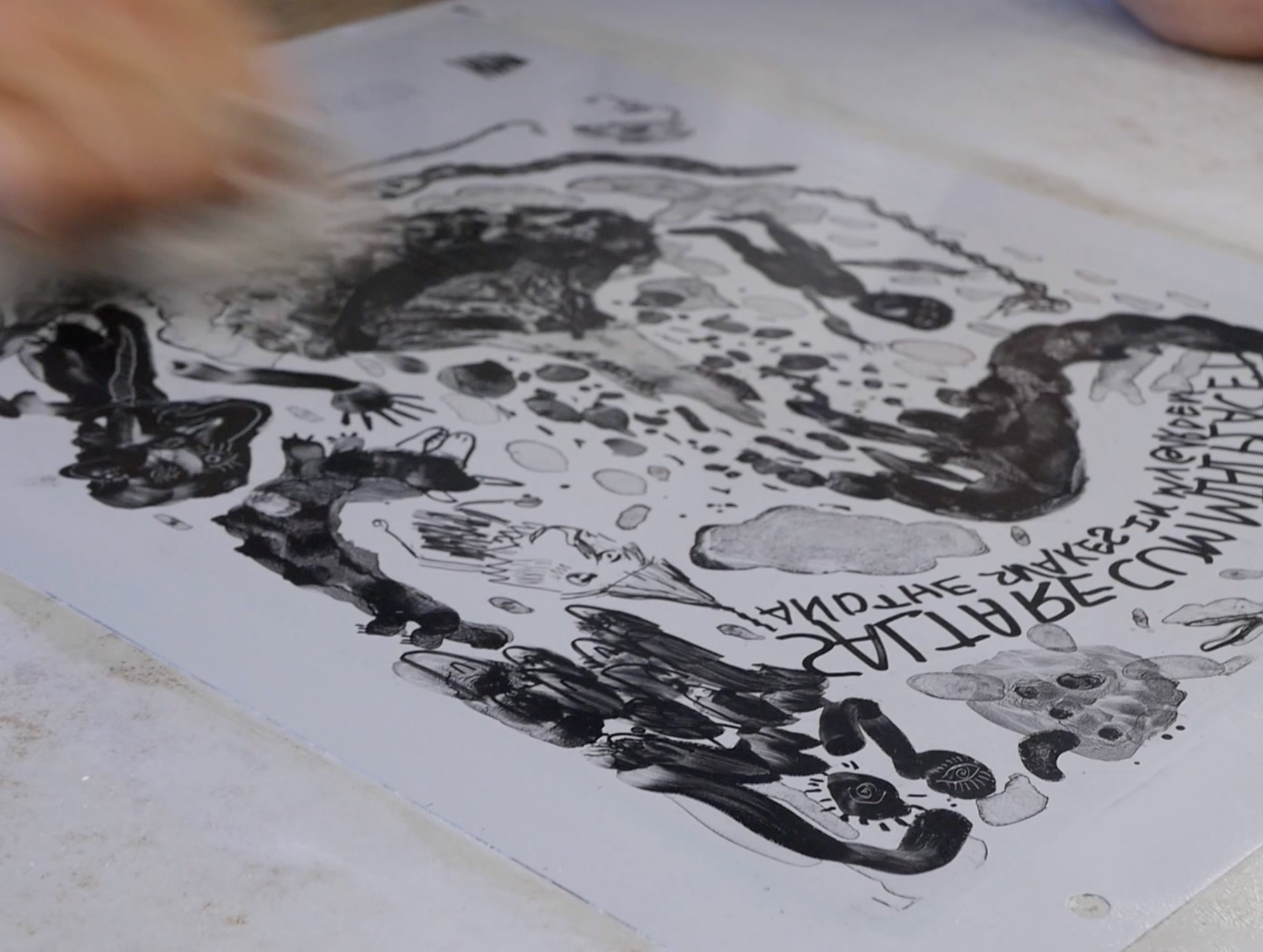
Before I began working as an apprentice at Tamarind Institute’s professional workshop, I gave thought to what my research should be about. I have been interested in the application of new technologies in lithography, especially since the arts and printmaking have always been early adopters of the new.
Through conversations with Brandon Gunn, I came across laser-plate technologies, a new form of making photolithographic plates that would be more stable and could reach a higher DPI than we are able to produce. While looking into this, I quickly realized that although these laser-plates had potential, they also had a couple of drawbacks. The equipment set-up, which includes a special laser printer, is expensive and not readily accessible for Tamarind, let alone a smaller shop with fewer resources. It is also completely reliable on computer files, which would add an extra step that dilutes the artist’s hand.
While this was an interesting avenue of exploration, I do not believe it to result in any practical application in the workshop of the average lithographer until the technology is more readily accessible. These first probes into laser-plate technologies allowed me to talk to a couple of people about photoplate lithography and working professionally has further exposed me to photoplates. I have seen the benefits and the potential problems of working with these plates.
The two major problems I have noticed in the last year-and-a-half are the decline of quality of the plates and their inflexible nature. Through the years production has stopped for a number of photoplate brands so we really don’t have many options left. We have to work with what we can get. I intend to focus on finding a solution for adding image area to an already exposed and processed plate.
When we process a photoplate, we work with plates that are pre-coated with a light-sensitive emulsion, take the artist’s drawing (on transparency) and place it on top of the plate, then expose it to a light source (the artist draws with materials that are UV-ray blocking). When the plate is exposed, the drawing will protect the plate from the light; in areas where there is no image, the light will be able to reach the emulsion and soften it up. We can then develop out the softened emulsion, leaving only the image in emulsion on the plate.
After the photoplate has been exposed, the artist’s drawing becomes a printable base on the surface of the matrix. While we can easily and reliably delete image area after processing a photoplate, we lack a good way of adding to the image area. We can only remove emulsion, the main reason why I consider the photoplate to be inflexible.
Limestone and aluminum plate both allow reliable additions to be made. Theoretically, we should be able to add image area to a photo plate, but as of now, we have not tested or guaranteed working methods of doing this.
